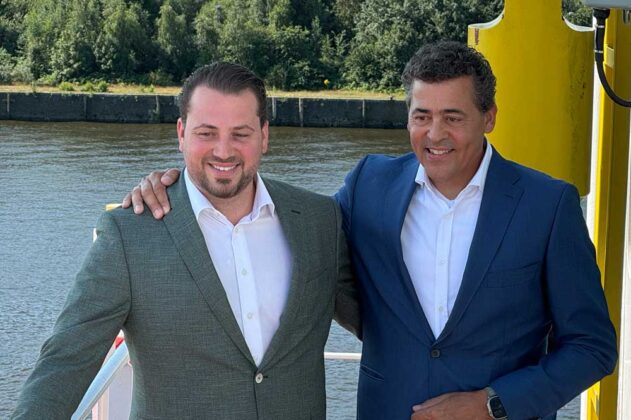The Hamburg-based MPP shipping company United Heavy Lift has completed its series of 19 newbuildings with the christening of the “UHL Fable” in Hamburg.
Just six months after the “UHL Fresh” was launched, the Hamburg-based heavy lift shipping company is now strengthening its “F900 Eco-Lifter” fleet with another newbuild.
The “UHL Fable” is the 19th ship to complete this series, which was originally initiated by another player and then further developed and operated by United Heavy Lift. With the F900 Eco-Lifters, the shipping company aims to set “new standards for environmentally friendly transportation in general cargo and heavy lift shipping”. Today, the “UHL Fable” was christened at the Baakenhöft terminal in the Port of Hamburg with 400 invited guests.
High demand
“We are very happy to be christening another ship in our home port of Hamburg,” said Andreas Rolner, Managing Partner of United Heavy Lift, at the ceremony.
The F900 Eco-Lifter fleet is “the most modern and homogeneous heavy lift fleet in the world”. There is a strong demand for alternative energy sources around the globe. “We are proud to be part of the supply chain for this green energy,” says Rolner, referring to the many onshore wind energy components that are transported on the ships. See the maiden voyage: “UHL Fable” transported a project cargo of rotor blades for onshore wind turbines from Danish-based manufacturer Vestas Wind Systems on its way from Tianjin and Dongzhao to Cuxhaven.
No investment pressure
Overall, like many market observers, Rolner & Co. see a bottleneck in the energy transition for special ships, including installation ships for wind farms and transport ships. Wouldn’t that be an argument for ordering more newbuilds? Not necessarily. “We are always looking around and also have designs in the drawer, but are currently remaining rather cautious,” says Rolner. The uncertainty about economic and industrial developments – not to mention the future bunker infrastructure – is still great. Having the right design for the right market at the right time and getting the financing in place is a complex issue.
As its own fleet is young, UHL feels “no investment pressure”. “We want to have the right design at the right time,” says Rolner. If UHL does build new vessels, it will be in the MPP/heavy-lift sector again, but with ships that are slightly larger than the F900 Eco-Lifter, says Rolner.
Around 50% of UHL’s cargoes come from the “renewable energies” sector, and in recent years, there has been a corresponding shift from the previous main cargo of “oil/gas”. UHL’s core area of operation is the trade between the Far East and Europe. However, according to Rolner, it is currently difficult to obtain cargo for “return trips” to Asia due to industrial developments. Sometimes, UHL ships are sent to Asia empty in order to meet the schedules in longer-term contracts, for example, for exports from China. This is because such contracts have been increasingly obtained in recent years.
Technical data “UHL Fable”
- Length: 149.99 m
- Width: 25.6 m
- Draught: 8.3 m
- Maximum speed: approx. 15 knots
- Floor space below deck: 3,870 m²
- Floor space on deck: 2,990 m²
- Total floor space: 6,860 m²
- Tonnage: 13,402 tons
- Handling equipment: 2 cranes | 2 x 450 t (safe working load)
- Deck Strength: 5-8 t or 16 t on tank top
- Flag: Portugal
- Engine: low-speed 2-stroke from MAN (5,750 kW)

















